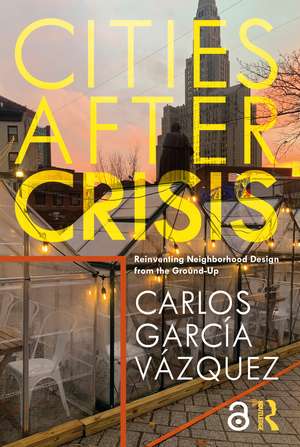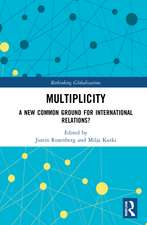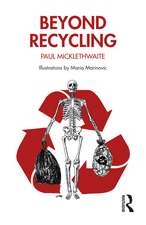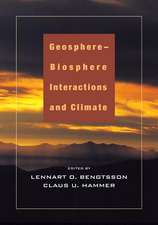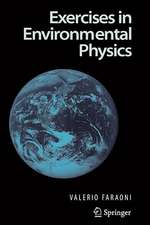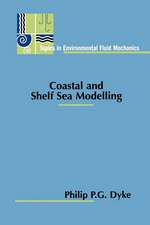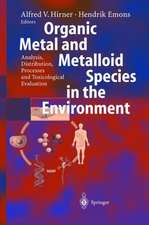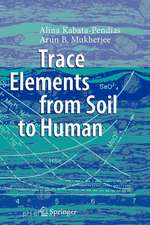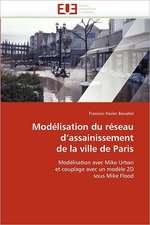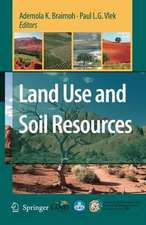Cities After Crisis: Reinventing Neighborhood Design from the Ground-Up
Autor Carlos Vazquezen Limba Engleză Paperback – 30 sep 2021
Through examples from cities around the world and a detailed look at the London neighbourhood of Dalston, the book shows designers and planners how to incorporate residents into the decision-making process, design inclusive public spaces that can be permanently reconfigured, reimagine obsolete spaces to accommodate radically contemporary uses, and build gardens designed and maintained by the community, among other projects.
| Toate formatele și edițiile | Preț | Express |
|---|---|---|
| Paperback (1) | 356.44 lei 6-8 săpt. | |
| Taylor & Francis – 30 sep 2021 | 356.44 lei 6-8 săpt. | |
| Hardback (1) | 1000.76 lei 6-8 săpt. | |
| Taylor & Francis – 30 sep 2021 | 1000.76 lei 6-8 săpt. |
Preț: 356.44 lei
Nou
Puncte Express: 535
Preț estimativ în valută:
68.21€ • 70.78$ • 57.01£
68.21€ • 70.78$ • 57.01£
Carte tipărită la comandă
Livrare economică 17-31 martie
Preluare comenzi: 021 569.72.76
Specificații
ISBN-13: 9780367673277
ISBN-10: 0367673274
Pagini: 222
Ilustrații: 136
Dimensiuni: 152 x 229 x 12 mm
Greutate: 0.45 kg
Ediția:1
Editura: Taylor & Francis
Colecția Routledge
Locul publicării:Oxford, United Kingdom
ISBN-10: 0367673274
Pagini: 222
Ilustrații: 136
Dimensiuni: 152 x 229 x 12 mm
Greutate: 0.45 kg
Ediția:1
Editura: Taylor & Francis
Colecția Routledge
Locul publicării:Oxford, United Kingdom
Public țintă
General, Postgraduate, Professional, and Undergraduate AdvancedCuprins
1. On Values: From Modernity to Anti-Progress 2. On the Environment: From Sustainability to Resilience 3. On Scale: From Globalism to Localism 4. On Resources: From Privatization to Commoning 5. On Agents: From Top-Down to Bottom-Up Processes Conclusion. Cities After the Covid-19 Crisis.
Notă biografică
Carlos García Vázquez, an architect and urban planner, is a full professor at the Escuela Técnica Superior de Arquitectura of the Universidad de Sevilla (Spain), as well as a visiting professor at the Scuola di Architettura Urbanistica Ingegneria delle Costruzioni of the Politecnico di Milano (Italy).
His main field of research is the contemporary city, having written the following books: Teorías e historia de la ciudad contemporánea (Fostering Arts and Design-FAD Award 2017); Antípolis. El desvanecimiento de lo urbano en el Cinturón del Sol (2011); Ciudad Hojaldre: Visiones urbanas del siglo XXI (2004); and Berlín-Potsdamer Platz: metrópoli y arquitectura en transición (2000)
He has carried out research stays at the Bartlett School of Architecture of University College London, the College of Architecture of Tongji University in Shanghai, and Northwestern University in Chicago.
His main field of research is the contemporary city, having written the following books: Teorías e historia de la ciudad contemporánea (Fostering Arts and Design-FAD Award 2017); Antípolis. El desvanecimiento de lo urbano en el Cinturón del Sol (2011); Ciudad Hojaldre: Visiones urbanas del siglo XXI (2004); and Berlín-Potsdamer Platz: metrópoli y arquitectura en transición (2000)
He has carried out research stays at the Bartlett School of Architecture of University College London, the College of Architecture of Tongji University in Shanghai, and Northwestern University in Chicago.
Recenzii
"In the form of an urban replica of Stendhal’s The Red and the Black, this book deals with the silent battle between the effects of the high urbanism of modernism and the low urbanism of people’s demands, describing to the last detail how the latter have gradually won the acceptance and acquired the prestige that in the past was enjoyed by grand planning schemes, allowing us to witness a spectacle the protagonists of which—the conflicts that permeate life and politics nowadays—find in the city a privileged setting".
—Iñaki Ábalos, Director and Founder of AS+ Abalos+Sentkiewiz, Former Chair Harvard Graduate School of Design.
"Carlos García Vázquez charts the forces of change and the range of urban policy and urban design responses that may be brought into play to facilitate new ways of living. This book makes an important contribution to the pressing questions of how we may adapt in a world that might be emerging from a pandemic but will still faces fundamental environmental, social and economic challenges".
—Peter Bishop, Professor at The Bartlett School of Architecture, University College London. Founding Director of Design for London.
"Carlos García Vázquez offers us a brilliant synthesis of the challenges that urban planning and design must address to tackle the three-pronged environmental, economic, and health crisis we are facing. This mature essay crowns several decades dedicated to reviewing visions and proposals revolving around the city. The book constitutes a valuable tool for scholars and professionals thanks to an original dialectic that balances an elegant conceptual approach with the empirical contrast provided by the Dalston (London) case study".
—José María Ezquiaga, Professor at the Escuela Técnica Superior de Arquitectura de Madrid, Universidad Politécnica de Madrid.
"Cities After Crisis reveals the key issues behind what is a real cultural revolution, the one of the modest, local, and community-led urban practices that the neobohemians have been displaying in cool neighborhoods as an expression of their lifestyle but which have proven their efficacy in the face of crises of all kinds (environmental, economic, health). Nowadays, these practices outline a new urban planning and design paradigm".
—Estanislau Roca, Full Professor at the Escola Tècnica Superior d’Arquitectura de Barcelona, Universitat Politècnica de Catalunya.
"An artisan of theories on the built environment, Carlos García Vázquez has crafted an overarching conceptual framework to support a much-needed urban reset in times of uncertainty. García Vázquez convincingly displays his rigour and intuition in a delightfully written piece…the future of cities is culture, and books like Cities After Crisis effectively encourage us to explore the way".
—Plácido González, Professor at College of Architecture and Urban Planning of Tongji University (Shanghai). Executive Editor, Built Heritage Journal.
"The situation we are living during the pandemic is pushing for a different point of view on contemporary cities which is posing urgent questions to the architecture culture. City After Crisis is a brilliant research which connects the environmentalist debate with urban studies, pointing out the quality of life and a sustainable approach to micro-urbanism as a way to improve the quality of our built environment and its future planning. The case study of Dalston (London) enlightens the centrality of cool neighbourhoods where the relationship between community, design, and good living represents one of the best tool to improve quality of every-day life and the metamorphism of the contemporary urban environment".
—Luca Molinari, Full Professor Department of Architecture and Design "Luigi Vanvitelli", Università della Campania (Naples).
"Often it takes someone from elsewhere to investigate the changes taking place in one’s city, which Carlos García Vázquez does in his fascinating analysis of gentrification in the Dalston neighbourhood in east London. Arguing instead for a bottom-up mode of urban transformation based upon shared ‘commons’, this book is of clear relevance to cities everywhere".
—Murray Fraser, Professor at The Bartlett School of Architecture, University College London.
—Iñaki Ábalos, Director and Founder of AS+ Abalos+Sentkiewiz, Former Chair Harvard Graduate School of Design.
"Carlos García Vázquez charts the forces of change and the range of urban policy and urban design responses that may be brought into play to facilitate new ways of living. This book makes an important contribution to the pressing questions of how we may adapt in a world that might be emerging from a pandemic but will still faces fundamental environmental, social and economic challenges".
—Peter Bishop, Professor at The Bartlett School of Architecture, University College London. Founding Director of Design for London.
"Carlos García Vázquez offers us a brilliant synthesis of the challenges that urban planning and design must address to tackle the three-pronged environmental, economic, and health crisis we are facing. This mature essay crowns several decades dedicated to reviewing visions and proposals revolving around the city. The book constitutes a valuable tool for scholars and professionals thanks to an original dialectic that balances an elegant conceptual approach with the empirical contrast provided by the Dalston (London) case study".
—José María Ezquiaga, Professor at the Escuela Técnica Superior de Arquitectura de Madrid, Universidad Politécnica de Madrid.
"Cities After Crisis reveals the key issues behind what is a real cultural revolution, the one of the modest, local, and community-led urban practices that the neobohemians have been displaying in cool neighborhoods as an expression of their lifestyle but which have proven their efficacy in the face of crises of all kinds (environmental, economic, health). Nowadays, these practices outline a new urban planning and design paradigm".
—Estanislau Roca, Full Professor at the Escola Tècnica Superior d’Arquitectura de Barcelona, Universitat Politècnica de Catalunya.
"An artisan of theories on the built environment, Carlos García Vázquez has crafted an overarching conceptual framework to support a much-needed urban reset in times of uncertainty. García Vázquez convincingly displays his rigour and intuition in a delightfully written piece…the future of cities is culture, and books like Cities After Crisis effectively encourage us to explore the way".
—Plácido González, Professor at College of Architecture and Urban Planning of Tongji University (Shanghai). Executive Editor, Built Heritage Journal.
"The situation we are living during the pandemic is pushing for a different point of view on contemporary cities which is posing urgent questions to the architecture culture. City After Crisis is a brilliant research which connects the environmentalist debate with urban studies, pointing out the quality of life and a sustainable approach to micro-urbanism as a way to improve the quality of our built environment and its future planning. The case study of Dalston (London) enlightens the centrality of cool neighbourhoods where the relationship between community, design, and good living represents one of the best tool to improve quality of every-day life and the metamorphism of the contemporary urban environment".
—Luca Molinari, Full Professor Department of Architecture and Design "Luigi Vanvitelli", Università della Campania (Naples).
"Often it takes someone from elsewhere to investigate the changes taking place in one’s city, which Carlos García Vázquez does in his fascinating analysis of gentrification in the Dalston neighbourhood in east London. Arguing instead for a bottom-up mode of urban transformation based upon shared ‘commons’, this book is of clear relevance to cities everywhere".
—Murray Fraser, Professor at The Bartlett School of Architecture, University College London.
Descriere
Cities After Crisis shows how urbanism and urban design is redefining cities after the global health, economic, and environmental crises of the past decades.
